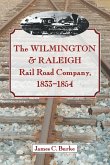
Broschiertes Buch
18. Dezember 2012
McFarland and Company, Inc.

Ähnliche Artikel

14,99 €
Versandfertig in 1-2 Wochen
Broschiertes Buch
The Bluff City Of The Chattahoochee (1875)
24. September 2009
Kessinger Publishing, LLC

20,99 €
Versandfertig in über 4 Wochen
Broschiertes Buch
The Untold Story of D-Day's Black Heroes, at Home and at War
1. November 2016
HarperCollins

Broschiertes Buch
Union Major Generals in the Civil War
16. Januar 2025
Louisiana State University Press

23,99 €
Versandfertig in 1-2 Wochen
Broschiertes Buch
Troubled Refuge: Struggling for Freedom in the Civil War
25. Juli 2017
Knopf

22,99 €
Versandfertig in 1-2 Wochen
Broschiertes Buch
19. März 2010
Kessinger Publishing, LLC

19,99 €
Versandfertig in über 4 Wochen

22,99 €
Versandfertig in über 4 Wochen


Broschiertes Buch
1. Mai 2009
Heritage Books Inc.
Ähnlichkeitssuche: Fact®Finder von OMIKRON
